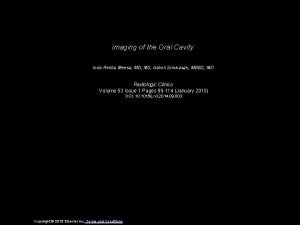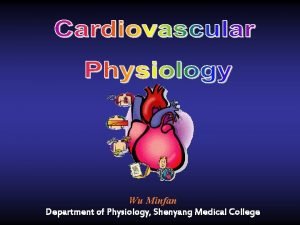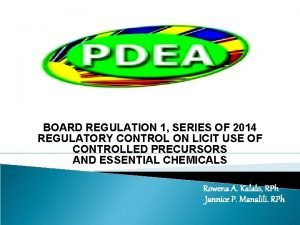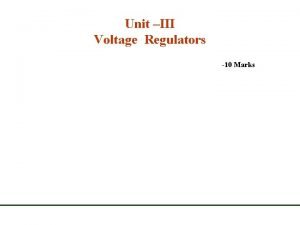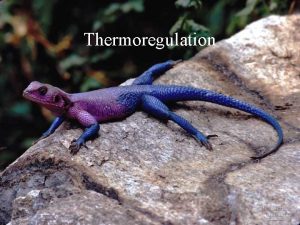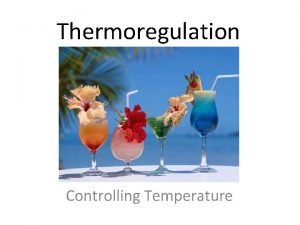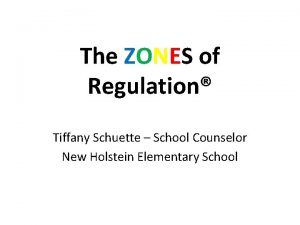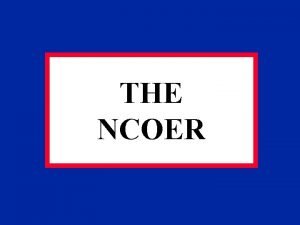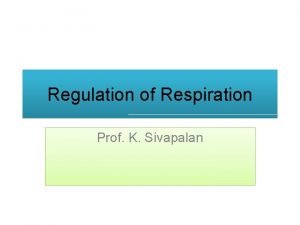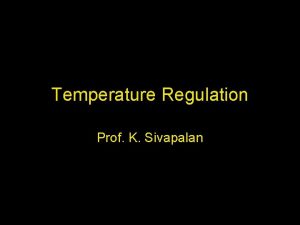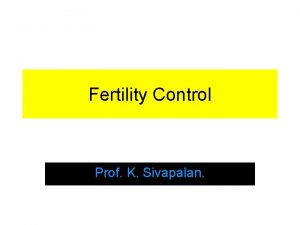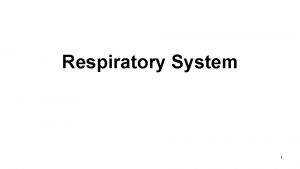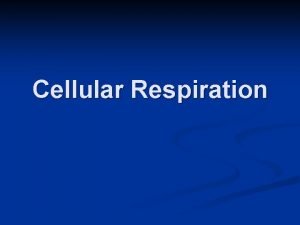Regulation of Respiration Prof K Sivapalan Introduction Respiration













- Slides: 13

Regulation of Respiration Prof. K. Sivapalan

Introduction • Respiration is altered by several factors. • The usage of oxygen and production of carbon dioxide and acids vary depending on the metabolic needs. • There is a good reserve of respiratory function- rate, depth and respiratory epithelium. • The respiratory system is controlled to meet the needs. 2013 Regulation of Respiration 2

Median Sagital Section of Brain 2013 Regulation of Respiration 3

Control of Respiratory Muscles • All respiratory muscles are striated muscles under voluntary control. • The nerves driving the respiratory muscles arise from the ventral horn of the spinal cord. • The anterior horn cell is the final pathway. • The voluntary efforts are controlled by cerebral cortex which activates the AHC. • Autonomic control is effected by centers in the brain stem which also influences the AHC 2013 Regulation of Respiration 4

Respiratory Centre • Respiratory center is located bilaterally in Medulla and Pons. • The dorsal group of cells are mainly expiratory and the ventral cells are bothe expiratory and inspiratory. • Cells in pons inhibit medullary inspiratory cells. 2013 Regulation of Respiration 5

Rhythmic Activity of the Centers • The inspiratory center, left alone on its own, discharges for about 2 seconds which results in inspiration. • It then stops for about 3 seconds during which the recoil of the lungs results in expiration. • The influence from the pons, pneumotaxic center, can reduce the inspiration to 0. 5 second absence can result in arrest in inspiration 2013 Regulation of Respiration 6

The Hering-Breuer Inflation Reflex • Afferents in the vagus inhibit inflation • The afferents originate from the stretch receptors in the bronchi and broncheols. • In human, they seem to be activated when the inflation is 1500 ml. 2013 Regulation of Respiration 7

Chemical Control of Respiration • Respiration is modified changes in partial pressures of oxygen and carbon dioxide and p. H of the blood. • The receptors responsible are collectively called chemo receptors. • The receptors located in Medulla are central chemo receptors and those in aorta and carotid arteries are peripheral chemo receptors 2013 Regulation of Respiration 8

Central Chemo-receptors • Cells in ventral Medulla respond to changes in Hydrogen ions in CSF which is proportional to PCO 2. • Blood p. H has no effect as H+ is not permeable through Blood brain barrier. • The central chemo receptors activate respiratory centre when CO 2 increases and inhibit when it decreases. • The effect is potent immediately but after one day the HCO 3 diffuses into CSF and reduces the effect. [Renal compensation] 2013 Regulation of Respiration 9

Peripheral Chemo-receptors • Most receptors- Carotid bodies near the bifurcation – glossopharingeal nerve. • Some receptors in the arch of the aorta- vagus nerve • A few receptors in abdominal and thoracic vessels. 2013 Regulation of Respiration 10

Receptors • Each body receives its own blood supply through an artery directly from the arterial trunk. • The blood flow in each 2 -mg carotid body is about 0. 04 m. L/min, or 2000 m. L/100 g of tissue/min compared with a blood flow 54 m. L or 420 m. L per 100 g/min in the brain and kidneys. • The blood flow is well above the need of the bodies: exposed to arterial blood. • Type I cells have catecholamines which are released to stimulate the afferents. • They increase discharge in response to reduction in PO 2, increase in PCO 2 and reduction of Hydrogen ion. 2013 Regulation of Respiration 11

Response to Oxygen • There is normal discharge at the PO 2 of 100 mm Hg. • It decreases as partial pressure increases and increases when partial pressure decreases. • The maximal change is between PO 2 of 60 -30 mm. Hg. The response is not affected by duration of hypoxia. • Denervation of carotid bodies results abolishes response to changes in – Oxygen tension- totally – p. H- great extent – Carbon dioxide by 30% • Central for carbondioxide and peripheral for oxygen and hydrogen. 2013 Regulation of Respiration 12

Factors that Affect Respiration • Inherant activity of respiratory center and reflex inhibition by stretch. • Changes in oxygen, carbon dioxide and hydrogen. • Voluntary control of respiration, higher centers- pain and emotion. • Motor cortical activity, proprioceptors: in exercise • Deglutition center, vomiting centre , straining, hiccup, yawning. • Changes in REM sleep, sleep apnoea. • Baro-receptor – mild inhibition. • Irritants in respiratory passage- cough and sneeze. • Cerebral oedema- compression of vessels • Anesthetics and narcotics. 2013 Regulation of Respiration 13
 Rekha sivapalan
Rekha sivapalan Regulation of breathing
Regulation of breathing External respiration vs internal respiration
External respiration vs internal respiration Internal respiration
Internal respiration Plan de texte argumentatif
Plan de texte argumentatif Homometric regulation of cardiac output
Homometric regulation of cardiac output Ddb board regulation #1 s. 2014
Ddb board regulation #1 s. 2014 Line regulation
Line regulation Jrotc grooming standards
Jrotc grooming standards Tubular reabsorption
Tubular reabsorption Countercurrent exchange thermoregulation
Countercurrent exchange thermoregulation Vasoconstriction heat loss
Vasoconstriction heat loss Zones of regulation stop opt go
Zones of regulation stop opt go Ncoer ar
Ncoer ar
